Welcome to another What If Blog. This time, I’m chatting with Hasan from Red Cannon Games about his journey into the world of game design, which interestingly began with a dream. We talk about his game, Fight For Inheritance, from its unique story concept to the nitty gritty of playtesting and finding a supportive community. Hasan also shares some great insights on handling feedback and tells us a bit about his upcoming Kickstarter launch. It’s a lovely look into how an idea can grow into a fully fledged game.
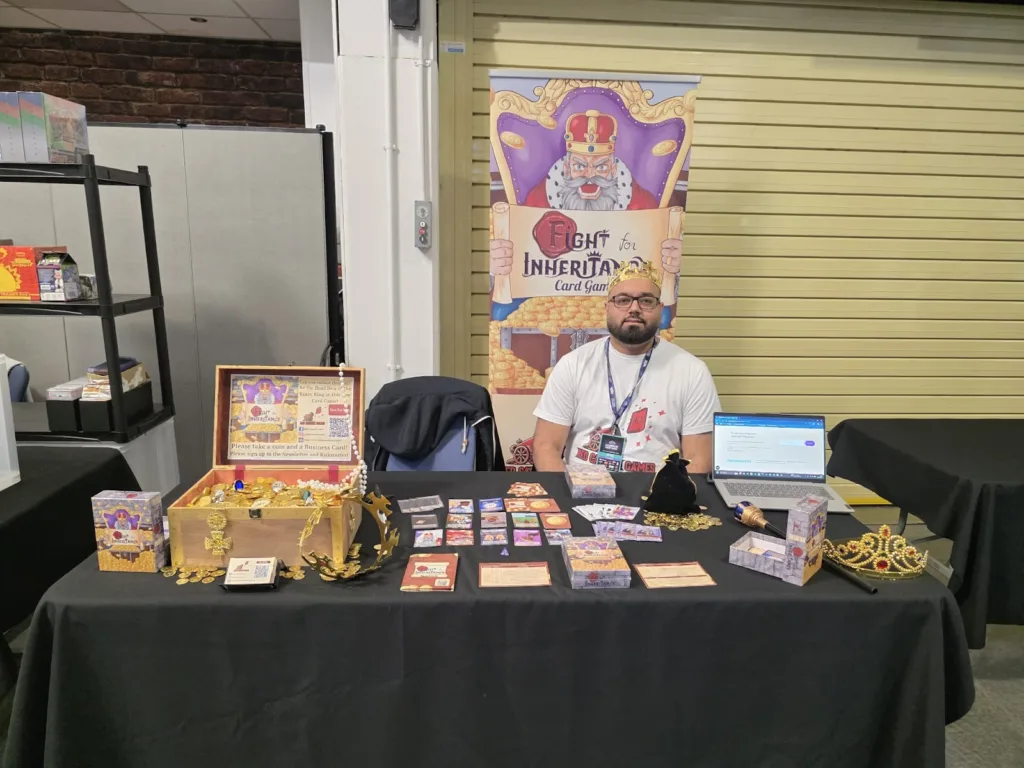
Joe: Welcome to the What if Blog, can you introduce yourself and tell us what brings you to the world of games design?
Red Cannon Games: Thank you so much for having me Joe. My name is Hasan and I fell into game design by chance. I got made redundant from my full time job and at that time I told myself let me take a month off and just relax before I start looking for a new job. During that time I genuinely felt mentally refreshed, not having to think about work and just doing things I wanted to do during the day. I focused a lot on catching up with friends I had not spoken to or met up with in a long time. I also played a lot of board games, card games and video games and also got to spend an amazing Summer with my two young sons.
Due to being in a good place mentally I think that’s why my creative juices started flowing.
Due to being in a good place mentally I think that’s why my creative juices started flowing and genuinely in the middle of the night I woke up with the idea for Fight For Inheritance, and I had to write it down so I don’t forget. In the morning I told my partner all about the idea and she was really supportive and told me to push on with the idea and that’s how I started to develop the game.
Joe: Here’s to taking a challenging situation and discovering it as an opportunity. It’s so true that a positive mental space helps with ideation and the feeling like you can explore new things.
You’re the second interview to have dreamt up a game. Can you tell us a little about Fight for Inheritance and particularly how the dream came to be?
Hasan: Yeah it’s a bit strange, when I spoke to other designers some also mentioned that they had similar experiences with ideas coming up in a dream!
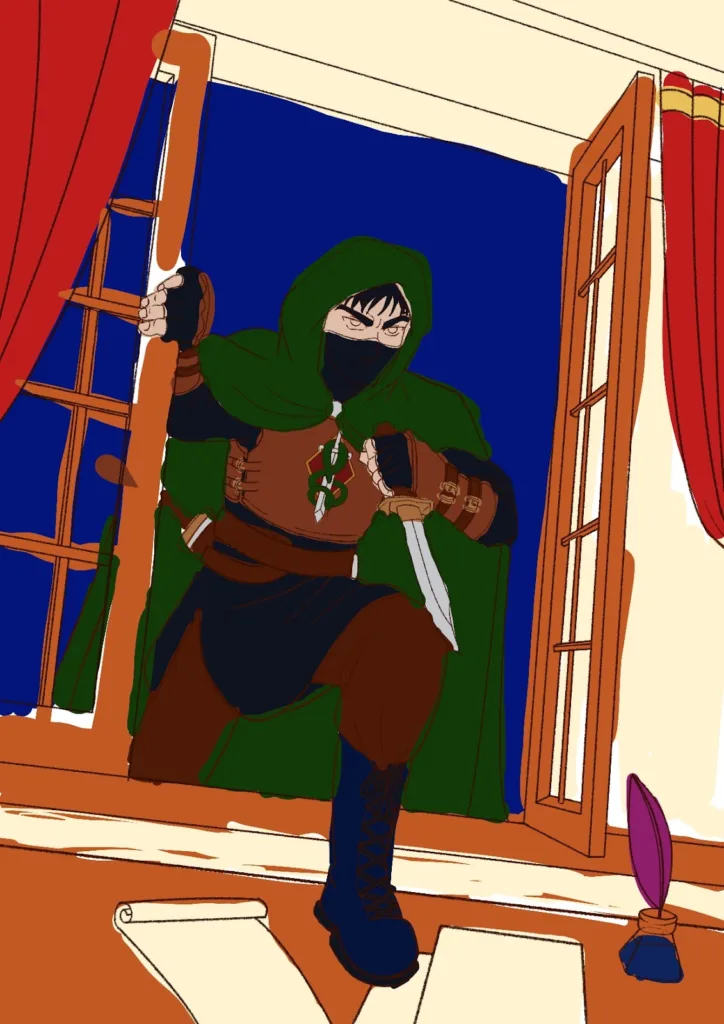
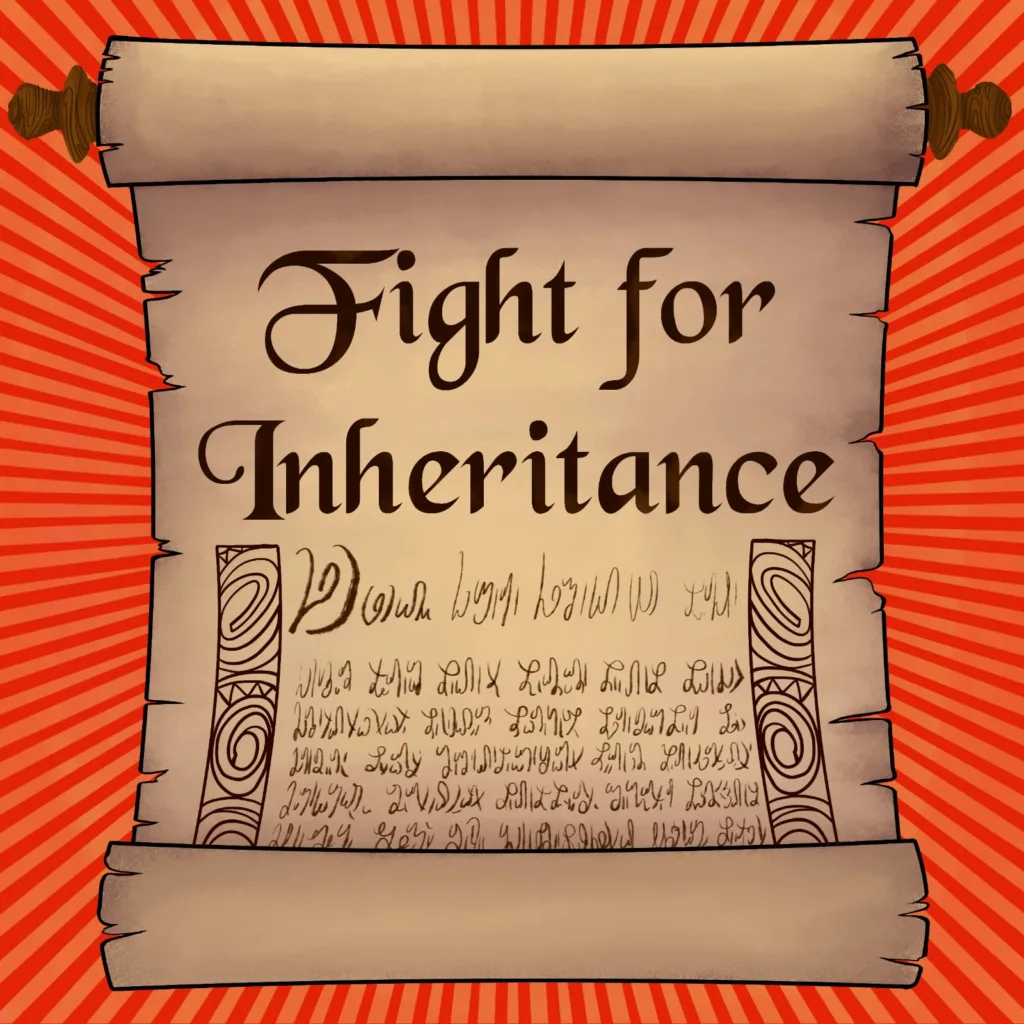
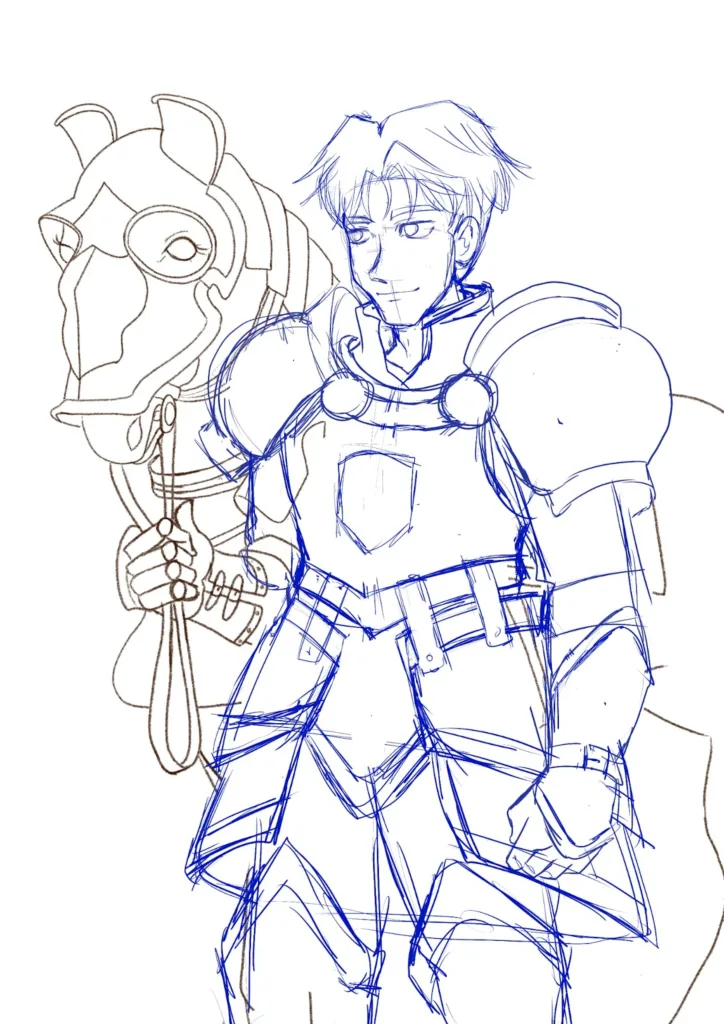
Early designs and concept art for Fight For Inheritance
I always liked telling stories and wanted a game that had that element to it, I came up with a story where the king of the kingdom was given the moniker the Krazy King and he got a fatal illness and was going to die soon, he had many children who came to his deathbed waiting to hear his final wishes. But instead of choosing an heir, he says, “A parent should not have a favourite child, so I will throw my crown and my fortune into the sea. But if I had only one child, I would leave everything to them.” (you can see now why he was called the Krazy King!). Naturally, chaos breaks out — the children become consumed by greed and they all start to plan on how to assassinate each other and be the last one standing. I recorded myself reading the story of the game and it turned out a lot more dramatic than I thought, you can see that here.
Naturally, chaos breaks out — the children become consumed by greed and they all start to plan on how to assassinate each other and be the last one standing.
You play as one of those children, the Prince and Princesses and have Bodyguards to protect you. If you pick up an Assassination Attempt card you discard a Bodyguard as they take the hit for you, but if you pick up the Assassination Attempt card and you don’t have a Bodyguard then you have been assassinated and are out of the game. You need to use Gold to bribe other player’s bodyguards or use other action cards to evade and survive assassination attempts and end up as the final Heir of the Krazy Kingdom.
I also added a mini-story to each action card as well. For example, for the Lucky Day card, rather than just saying “Pick up 2 Gold“, it says “You find Gold on the ground during a walk. Pick up Gold with a total value of 2 from the Treasury.” I thought adding those little story snippets would help give the cards more flavour and depth.

During that summer I felt mentally refreshed and I was playing a lot of games with friends at the time, things like Catan, Pandemic, Love Letter, Exploding Kittens, Saboteur and more and then at night I kept thinking I really like this mechanic from this game, oh I am not the biggest fan of this mechanic or this doesn’t seem needed and I think because I was having those thoughts before I fell asleep that the dream came where it was telling me to put all the mechanics together from the games I enjoy into my own game.
Joe: Fantastic. The story as such a lovely theme to the game. You get the point where the idea is crystallised, what were you next steps? How rocky did you get to playtesting?
Hasan: Playtesting was a completely new experience for me and honestly, it turned out to be one of the most rewarding parts of the whole process.
At the start I was doing a lot of research by diving into different games, studying mechanics and trying to understand why certain elements work while others don’t. My notepad was overflowing with sketches of card abilities, quantities, and game flow ideas. I’d sit down, play through each turn on my own and constantly ask myself, “Is this fun? Does this feel balanced?” That led to a lot of iterations. I was removing cards, adding new ones, changing how many of each appeared in the deck and testing it all over again.
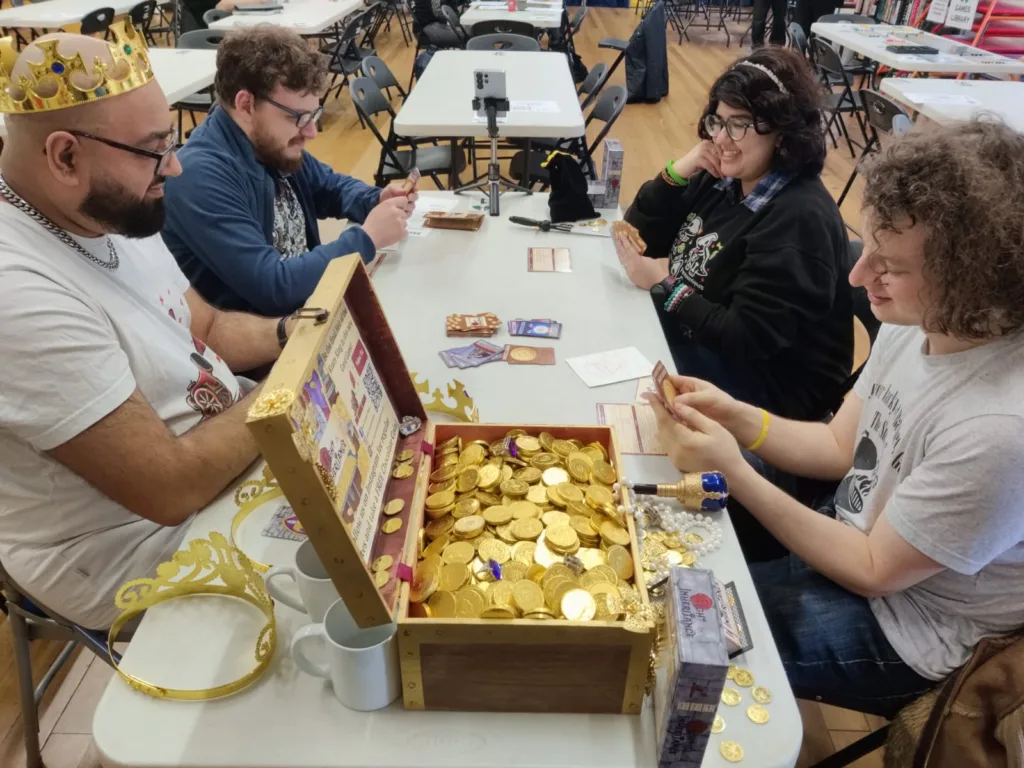
Eventually, I brought in friends and family to help playtest. Sometimes I’d join the games, other times I’d just watch, take notes, and absorb their reactions. With every round of feedback, I refined things further, and soon the game started to click. It felt fun, it played differently each time, and it finally felt balanced.
I’d sit down, play through each turn on my own and constantly ask myself, “Is this fun? Does this feel balanced?”
Once I reached that point, I started taking Fight for Inheritance to gaming cafes to test it with new players. The support I got there was amazing. People not only gave great feedback on the gameplay, but also on the artwork and the logo. That helped me make decisions to help improve everything even more.
That’s when I took a big leap and went to HandyCon, specifically to the playtesting zone. I went in hoping to get feedback from fresh eyes, and I did, but what really surprised me was the community of game designers I met there. People from Sleepless Knights Games, Huff No More, Minor Disaster Games, Molinarius Games and others. They were all incredibly welcoming and generous with their advice on crowdfunding, playtesting, and navigating the indie board game world. It was amazing.
Caley from Minor Disaster Games also introduced me to the #BoardGameProtoHype community, which has been one of the best things to come out of this journey. It’s a supportive, collaborative space that’s helped not just me, but so many other indie designers move their projects forward.
Now, whenever I speak to new designers, I always say go to as many events as you can. Not just to test your game, although that’s super important, but to meet the people around you. They might get lucky enough to meet some amazing people like I did.
Joe: It’s great to see that journey laid out, when you look back upon that how much have you changed as a designer? Are there any points where that change was significant, a realisation about yourself or the game that was important?
Hasan: A big thing I’ve learned from this journey is that I’m not in it alone. There’s a huge community of designers and creators out there who are going through the same challenges, and what’s incredible is how open and supportive everyone is. Whether I need advice or just someone to bounce ideas off, there’s always someone I can reach out to. And in turn, I’ve tried to stay open so that others feel they can reach out to me too. That sense of shared experience has been really powerful.

One of the most valuable lessons has been learning how to take in quality feedback, and knowing which feedback to act on. Over time I’ve learned to recognise the difference between input that’s genuinely helpful and suggestions that might not align with the core vision of the game. Connecting with reviewers and influencers who play a wide variety of games has been especially insightful. They bring a fresh perspective and often spot things I hadn’t considered. One example that stands out is Amy from @StephensFamilyGaming who gave some brilliant feedback on the Royal Decrees, which are powerful, once-per-game abilities tied to your Royal Character. Her insights really helped with ideas I was struggling with and we ended up incorporating some of her suggestions directly into the final version.
Connecting with reviewers and influencers who play a wide variety of games has been especially insightful. They bring a fresh perspective and often spot things I hadn’t considered.
Joe: Let’s dive in there, how do you make the decision between actionable and ignorable feedback? Is there some rule that you use or advice you could give to help people work that out when they’re having their games playtested?
Hasan: It is something I spoke to other designers about and a few people mentioned something called the “rule of three” that really stuck with me:
- If one person mentions something, it might be ignorable.
- If two people mention it, keep an eye on it.
- If three or more mention it, it’s worth acting on.
This framework made a lot of sense and helped me focus on actionable feedback. That said, there are times when even a single piece of feedback can be a breakthrough, especially if it’s something you’ve been struggling with or mulling over. I had a few moments like that while working on Fight For Inheritance, and they really helped improve the game.
At the end of the day, you know your game better than anyone. Trust your instincts, but also listen closely to the people who’ll be playing it. Taking on good feedback is crucial.
Joe: That’s great advice. I imagine easier said than done though!
Let’s explore your upcoming kickstarter, when do you launch and what’s on your ‘to do’ list?
Hasan: We have decided on launching Fight For Inheritance on Friday, 30th May, to coincide with our appearance at UK Games Expo!
We chose this date because conventions like UKGE are full of people ready to discover and support new games, and we’ve found that attendees want to buy on the spot. If people enjoy what they see at our stand, we’re hoping they’ll be more likely to back the game on Kickstarter.
To sweeten the deal, we’ll be offering early bird discounts of up to 24% from Friday to Sunday during UKGE. We also have a limited “Become a Royal” reward tier with only 8 available! Backers who choose this tier will be immortalised as one of the Royal Characters in Fight For Inheritance, becoming a permanent part of the game. Our artist will illustrate you as a royal, your name will appear on the character card, and you’ll be credited in the rulebook. It’s a nice chance to be part of the game’s legacy.
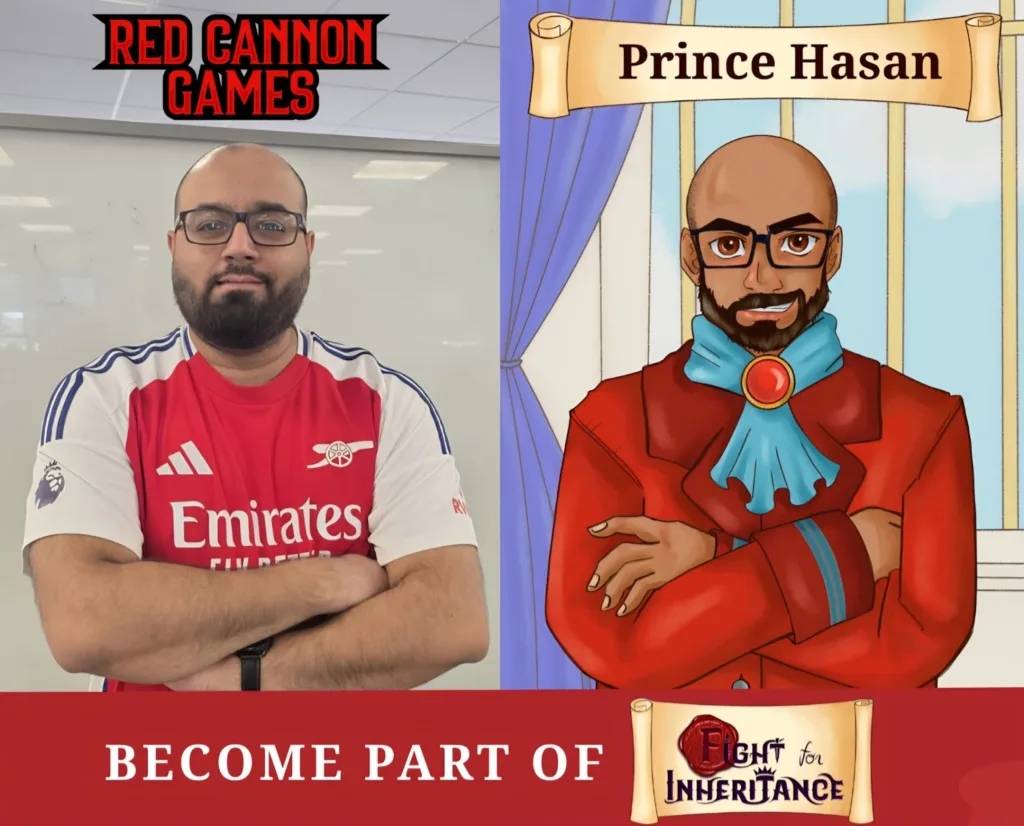
Plus, if you back the game and come visit us at our stand (Hall 2, 2-248), you’ll receive a raffle ticket for that day’s daily prize draws which will be held one hour before the expo closes each day. Prizes will include things like a free copy of Fight For Inheritance!
There’s still a lot to do in the final stretch with double-checking the Kickstarter page, reviewing images, fine-tuning the promo video but we’re nearly there!
Joe: That’s really exciting. Crowdfunding has gone through a rough few months with the US China tariff situation – has this been something that’s changed your approach to your campaign at all?
Hasan: Not exactly, mainly because I don’t know how many backers we’ll have from the US yet, and the situation with tariffs and shipping seems to shift week by week. It’s hard to predict where things will stand by the time we (hopefully) fund and start fulfilling.
It’s not something I can fully control, but I’m building in some flexibility. For example, I’ll be using a pledge manager to collect shipping fees after the campaign ends. That way, I can adjust US shipping costs based on the most up-to-date tariff rules and ensure backers aren’t over or undercharged.
Joe: That lack of certainty is so tricky, finding ways to save that thinking for a later date might be one way of making sure it’s not a distraction to your campaign.
OK. Let’s finish off. You’re a week away from launch – how does that feel – how are you keeping sane – are you sleeping?
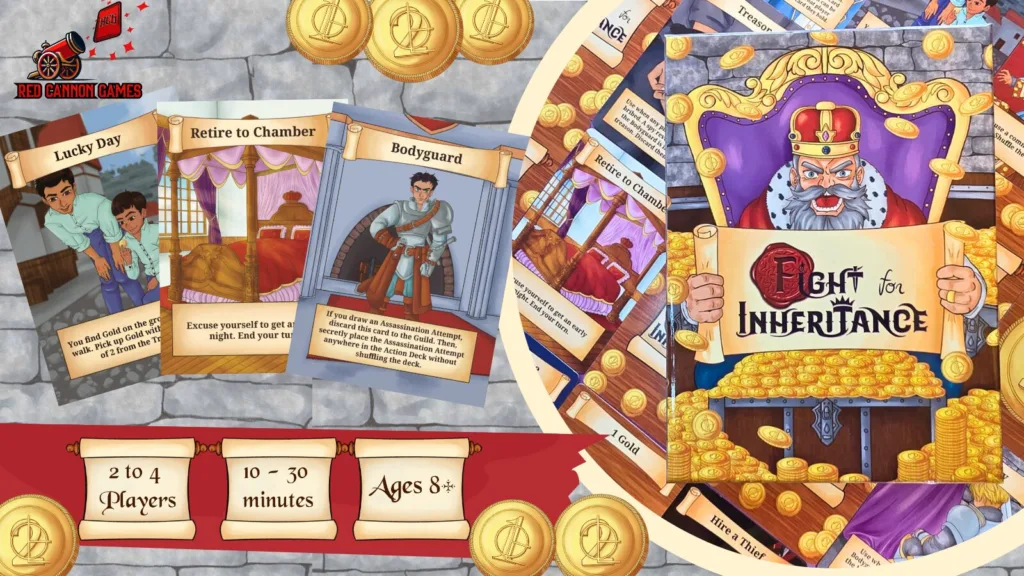
Hasan: It’s definitely a mix of emotions from excitement, nervousness, and everything in between. I don’t think there’s much more I can do really.
Whenever I start to wonder, “Is the game good enough?”, an amazing review will come in from one of the amazing influencers or reviewers I sent the game to and that rebuilds my confidence.
Now it’s all about those final touches, preparing the campaign, double-checking everything then trying to enjoy UKGE and the big launch. Realistically, I’ll be double, triple, maybe even quadruple-checking everything until we go live, not sure I am staying sane haha.
Thank you once again Joe for having me on the blog, I really appreciate it and keep up the amazing work that you have been doing for the board game community, you are amazing!
And that brings us to the end of our chat. A big thank you to Hasan for sharing his story with us, from the unexpected dream that sparked Fight For Inheritance to the hard work of playtesting, building community connections, and preparing for a Kickstarter launch. It’s been fascinating to hear about the journey of Red Cannon Games and the creation of a game with such a rich narrative. We wish Hasan all the best for the UK Games Expo and the Fight For Inheritance campaign – you can follow the campaign on Kickstarter here and find Hasan on instagram here.
Want these blog posts straight in your inbox, sign up to the mailing list below!


